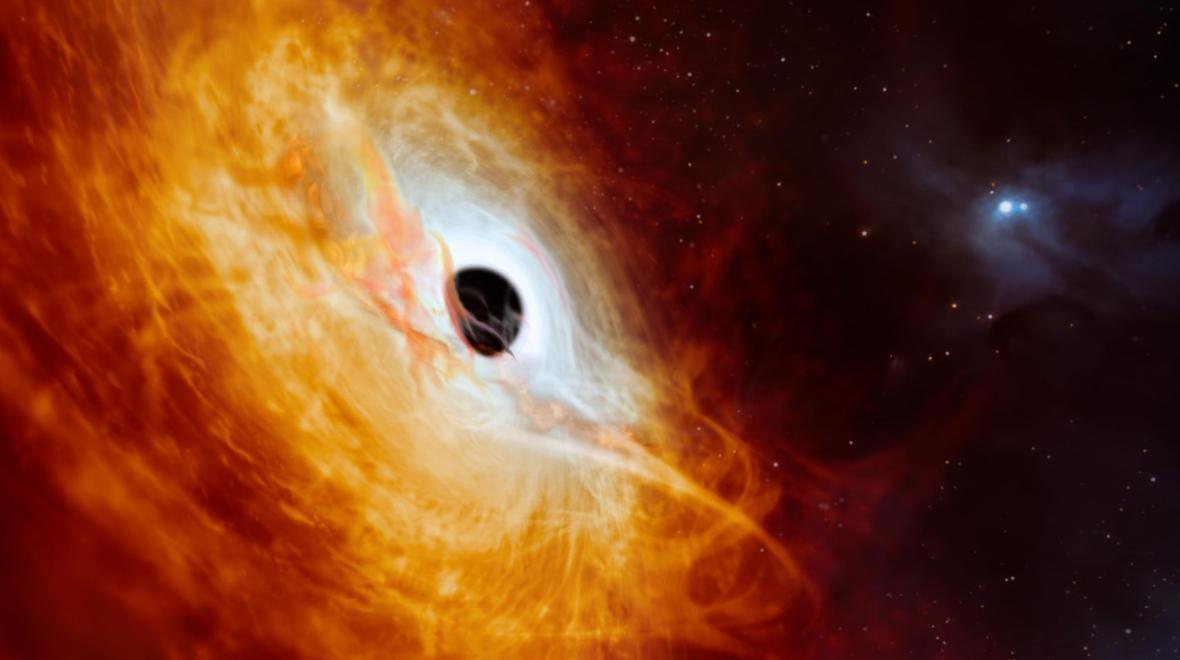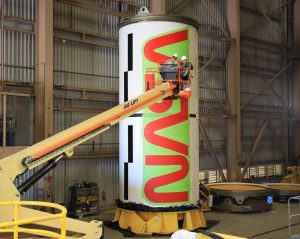‘Hiding In Plain Sight’: Australian Scientists Discover Record-Breaking Black Hole
21st Feb 2024
Scientists from the Australian National University (ANU) have unearthed the fastest-grown black hole in the universe. The record-breaking discovery was made using a 2.3 metre telescope in Coonabarabran, New South Wales. To locate it, they traced the 12 billion-year-old light emitted back to the original source: a prodigious black hole with the mass of 17 billion Suns.
Once sighted, the Australian scientists validated the discovery using the European Southern Observatory (ESO) which was able to dig deeper into the composition of the black hole. ANU’s Associate Professor Christian Wolf, who was the lead author on the study, commented: “the incredible rate of growth also means a huge release of light and heat. So, this is also the most luminous known object in the universe.”
Finding The Fastest-Growing Black Hole In The Universe
ANU scientists have labelled the black hole as the “fastest-growing black hole ever recorded”. To live up to its title, the chasm appears to consume one sun daily and measures upwards of 17 billion solar masses.
Due to the black hole’s said diet, Wolf highlighted that it emits a monumental amount of light. This is in addition to heat, which in turn, makes it considerably bright. So much so that it is 500 trillion times more luminous than the Sun. And this light is infinitely proliferating. As a result, it is currently the brightest discovered object in the universe. “It’s a record [Wolf] doesn’t think will ever be beaten,” ANU added.
Once they found the black hole, ANU enlisted the help of ESO’s massive telescope to substantiate their discovery. From there, scientists were able to measure the black hole’s mass and understand its “full nature”.
The Make-Up Of The Unnamed Black Hole
The black hole boasts a 10,000 degree Celsius “storm cell” that is seven light years in measurement. For perspective, that is equivalent to travelling over 50% of the distance required to reach Alpha Centauri from the solar system. Extreme radiation is also continuously effused from the accretion disk that encircles the black hole. ANU said this “is the holding pattern for all the material waiting to be devoured.”
“It looks like a gigantic and magnetic storm cell with… lightning everywhere and winds blowing so fast they would go around Earth in a second. In the adolescent universe, matter was moving chaotically and feeding hungry black holes. Today, stars are moving orderly at safe distances and only rarely plunge into black holes. We were only able to make these discoveries because of The Australian Government’s 10-year partnership with the ESO,” Wolf said.
Comparing The Black Hole To Others Discovered
The nameless black hole has set a record for being the fastest-growing in the universe. But how does it’s size compare to others discovered? In January 2024, scientists found the oldest black hole in the universe, which dates back to over 13 billion years ago. This black hole is a million times larger than the Sun. However, it’s just a mere monster compared to ANU’s black hole which is 17 billion times bigger than the Sun.
The black hole also towers over the Milky Way’s Sagittarius A*, which is only 4.3 million solar masses. Additionally, one of the only black holes ever pictured, M87, is 5.4 billion times greater than the sun. Perspectively, it takes light two and a half days to cross it – if that were possible. However, it is only nearly half the size of ANU’s recent discovery.
But a black hole that settles the debate and defeats ANU’s is TON 618. This supermassive black hole boasts 60 billion solar masses and is considered the biggest black hole ever discovered. Nonetheless, Research partner and co-author, Dr Christopher Onken, concluded: “It’s a surprise it remained undetected until now, given what we know about many other, less impressive black holes. It was hiding in plain sight.”







Thank you for your comment! It will be visible on the site after moderation.